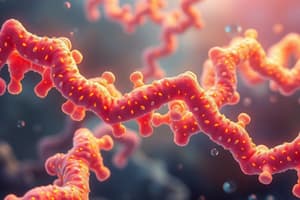Podcast
Questions and Answers
What is the main purpose of the POST function in a computer?
What is the main purpose of the POST function in a computer?
- To store the BIOS
- To store basic data like the date and startup method
- To ensure all hardware is recognized and operational (correct)
- To tell the CPU how to run individual devices
Which of the following options is NOT a task performed by POST?
Which of the following options is NOT a task performed by POST?
- Testing the power supply unit
- Storing BIOS settings (correct)
- Isolating CPU issues
- Identifying hardware components
What happens if the POST detects an error during its routine?
What happens if the POST detects an error during its routine?
- The computer will give visual or audible alerts (correct)
- The BIOS will automatically update itself
- The operating system will boot normally
- The peripheral devices will be disabled
Which component is primarily involved in the execution of the POST routine?
Which component is primarily involved in the execution of the POST routine?
What might occur if the POST check is skipped or fails?
What might occur if the POST check is skipped or fails?
Flashcards are hidden until you start studying
Study Notes
POST Function in a Computer
- Stands for Power-On Self-Test and is a diagnostic process executed when a computer is powered on.
- Identifies and checks the hardware components, ensuring they are functioning correctly.
- Verifies essential system functions, including memory, keyboard, and other input/output devices.
- Provides feedback via error codes or beeping if issues are detected during the test.
- Ensures the BIOS (Basic Input/Output System) is properly stored and functional to facilitate the boot process.
- Confirms the startup method and basic data like the date and time settings are accurate.
Studying That Suits You
Use AI to generate personalized quizzes and flashcards to suit your learning preferences.




